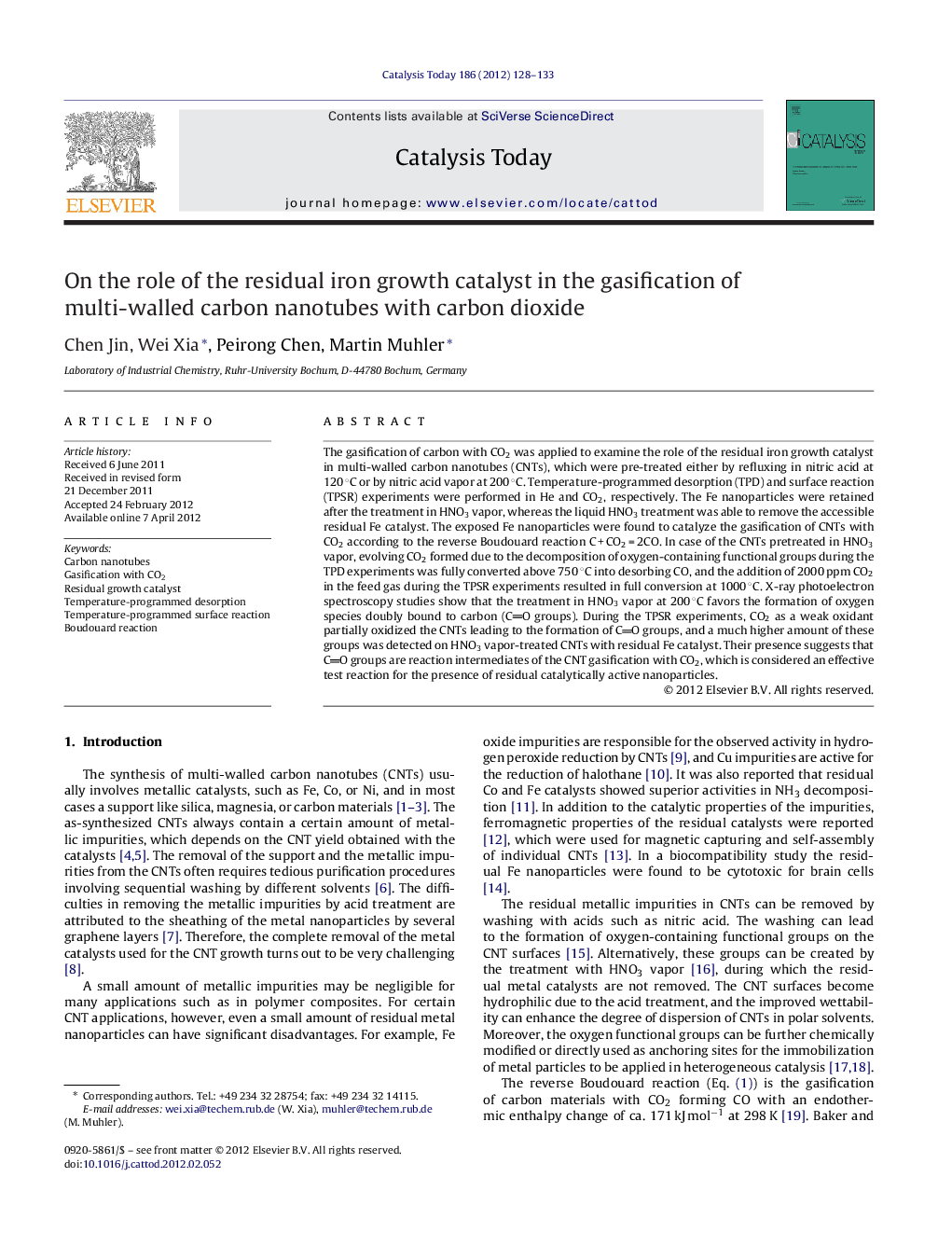| Article ID | Journal | Published Year | Pages | File Type |
|---|---|---|---|---|
| 55492 | Catalysis Today | 2012 | 6 Pages |
The gasification of carbon with CO2 was applied to examine the role of the residual iron growth catalyst in multi-walled carbon nanotubes (CNTs), which were pre-treated either by refluxing in nitric acid at 120 °C or by nitric acid vapor at 200 °C. Temperature-programmed desorption (TPD) and surface reaction (TPSR) experiments were performed in He and CO2, respectively. The Fe nanoparticles were retained after the treatment in HNO3 vapor, whereas the liquid HNO3 treatment was able to remove the accessible residual Fe catalyst. The exposed Fe nanoparticles were found to catalyze the gasification of CNTs with CO2 according to the reverse Boudouard reaction C + CO2 = 2CO. In case of the CNTs pretreated in HNO3 vapor, evolving CO2 formed due to the decomposition of oxygen-containing functional groups during the TPD experiments was fully converted above 750 °C into desorbing CO, and the addition of 2000 ppm CO2 in the feed gas during the TPSR experiments resulted in full conversion at 1000 °C. X-ray photoelectron spectroscopy studies show that the treatment in HNO3 vapor at 200 °C favors the formation of oxygen species doubly bound to carbon (CO groups). During the TPSR experiments, CO2 as a weak oxidant partially oxidized the CNTs leading to the formation of CO groups, and a much higher amount of these groups was detected on HNO3 vapor-treated CNTs with residual Fe catalyst. Their presence suggests that CO groups are reaction intermediates of the CNT gasification with CO2, which is considered an effective test reaction for the presence of residual catalytically active nanoparticles.
Graphical abstractFigure optionsDownload full-size imageDownload high-quality image (155 K)Download as PowerPoint slideHighlights► Carbon nanotubes were oxygen functionalized by exposing them to nitric acid. ► Nitric acid vapor led to CO groups, but the residual iron growth catalysts was not removed. ► Refluxing in boiling liquid nitric acid removed the residual iron growth catalyst. ► During TPD and TPSR experiments C + CO2 = 2 CO was catalyzed by the residual iron nanoparticles. ► XPS detected mainly high-temperature stable CO groups acting as intermediates of the Boudouard reaction.
